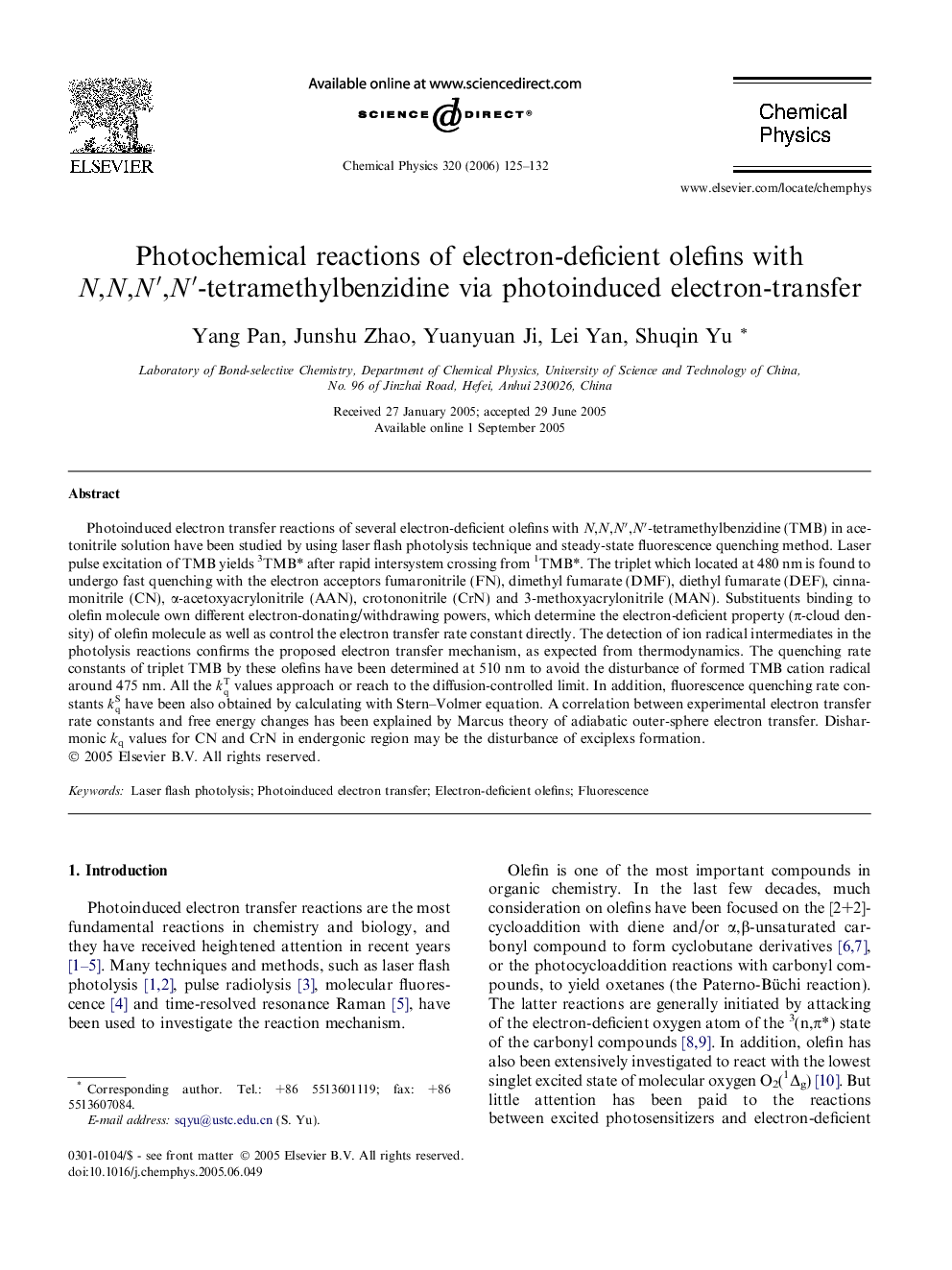| Article ID | Journal | Published Year | Pages | File Type |
|---|---|---|---|---|
| 5377358 | Chemical Physics | 2006 | 8 Pages |
Abstract
Photoinduced electron transfer reactions of several electron-deficient olefins with N,N,Nâ²,Nâ²-tetramethylbenzidine (TMB) in acetonitrile solution have been studied by using laser flash photolysis technique and steady-state fluorescence quenching method. Laser pulse excitation of TMB yields 3TMB* after rapid intersystem crossing from 1TMB*. The triplet which located at 480 nm is found to undergo fast quenching with the electron acceptors fumaronitrile (FN), dimethyl fumarate (DMF), diethyl fumarate (DEF), cinnamonitrile (CN), α-acetoxyacrylonitrile (AAN), crotononitrile (CrN) and 3-methoxyacrylonitrile (MAN). Substituents binding to olefin molecule own different electron-donating/withdrawing powers, which determine the electron-deficient property (Ï-cloud density) of olefin molecule as well as control the electron transfer rate constant directly. The detection of ion radical intermediates in the photolysis reactions confirms the proposed electron transfer mechanism, as expected from thermodynamics. The quenching rate constants of triplet TMB by these olefins have been determined at 510 nm to avoid the disturbance of formed TMB cation radical around 475 nm. All the kqT values approach or reach to the diffusion-controlled limit. In addition, fluorescence quenching rate constants kqS have been also obtained by calculating with Stern-Volmer equation. A correlation between experimental electron transfer rate constants and free energy changes has been explained by Marcus theory of adiabatic outer-sphere electron transfer. Disharmonic kq values for CN and CrN in endergonic region may be the disturbance of exciplexs formation.
Related Topics
Physical Sciences and Engineering
Chemistry
Physical and Theoretical Chemistry
Authors
Yang Pan, Junshu Zhao, Yuanyuan Ji, Lei Yan, Shuqin Yu,
